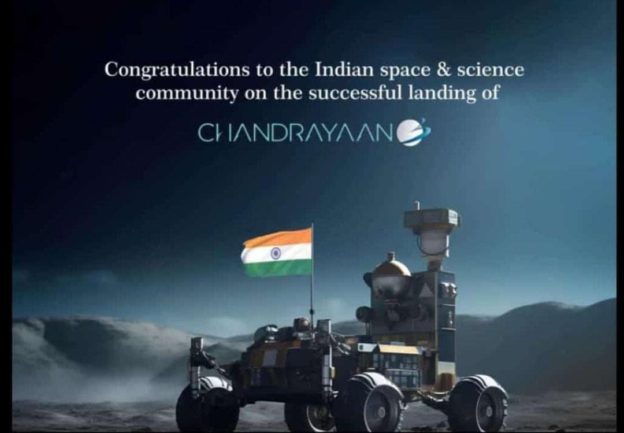Experts see this as yet another milestone in the evolution of the 400-odd private companies that form part of the large vendor ecosystem the national space agency ISRO has carefully built over the last 54 years
- Chandrayaan-3 mission has several technologies and components developed by the Indian spacetech ecosystem
- The list includes some of the biggest names from the public and private sectors of India Inc.
- Leading companies have also started looking at enhancing their participation in the country’s space industry
When Chandrayaan-3 lander Vikram makes a soft landing on the Moon on Wednesday, other than once again firmly reaffirming India’s position as a leading space superpower, its success will also help to significantly boost India Inc.’s role in the country’s space sector.
Experts see this as yet another milestone in the evolution of the 400-odd private companies that form part of the large vendor ecosystem the national space agency, the Indian Space Research Organisation (ISRO), has carefully built over the last 54 years to service its components, material and fabrication requirements.
“While the Chandrayaan series of lunar missions have all been led by ISRO, there has been significant participation by the private sector in supplying components for them. It goes to the agency’s credit that it identified suppliers who have over time developed capabilities to support a high-end mission like the Chandrayaan series,” Lt Gen (Retd) Anil Kumar Bhatt, Director General of the apex industry body, the Indian Space Association (ISpA) told Business Today.
For the Chandrayaan-3 mission also ISRO has sourced technologies from both public and private sector firms. For instance, the launch vehicle booster segments and subsystems were crafted by Larsen & Toubro, batteries supplied by Bharat Heavy Electricals Ltd (BHEL), electronic power modules and test and evaluation system developed by Kerala State Electronics Development Corp. (KELTRON) and mission components manufactured by Walchand Industries.
Working on new technologies
The list of ISRO vendors also has names such as Ananth Technologies Ltd (ATL) and Godrej & Boyce.
“ATL has been into manufacturing of various electronics as well as mechanical subsystems for ISRO’s launch vehicles, satellites, spacecraft payloads, and ground systems. In addition, we have also been providing geospatial data and services for a host of multi-sectoral developmental projects in the country,” stated Subba Rao Pavuluri, Founder and Chairman and Managing Director of the Hyderabad-headquartered firm.
ATL has executed many major satellite systems for the Chandrayaan-3 mission including telemetry, telecommand, power management systems, and direct current-to-direct current (DC-DC) converters for the Chandrayaan-3 mission.
Meanwhile, Mumbai-headquartered Godrej & Boyce has contributed critical components like liquid propulsion engines, satellite thrusters and control module components for both the Chandrayaan and Mangalyaan missions through its subsidiary Godrej Aerospace.
“We take immense pride in our contribution to ISRO’s Chandrayaan 3 mission… As a trusted partner of ISRO, we will continue to contribute to future launches, missions, and the development of advanced aerospace components and systems,” averred Maneck Behramkamdin, Assistant Vice President & Business Head of Godrej Aerospace.
Foraying into new areas
India opened its space sector to private sector participation in 2020. Last year, a HAL-L&T consortium bagged a Rs 860 crore deal from New Space India Ltd (NSIL) to build five Polar Satellite Launch Vehicle (PSLV) rockets, also described as India’s workhorse for sending missions in outer space.
“Larger companies, which were primarily vendors to ISRO have now started warming up to the idea of investing in technology and making bigger bets in the space sector than what they were doing in the past. So many of them now want to have access to making rockets, satellite making and other big projects,” Pawan Goenka, Chairperson of the Indian National Space Promotion and Authorization Centre (IN-SPACe), the single window nodal agency for authorising, promoting and regulating private players in the space sector, told BT.
Following a recent IN-SPACe initiative, a total of 20 companies expressed their interest in manufacturing the Small Satellite Launch Vehicle (SSLV) developed by ISRO to support the launch of satellite constellations into the Lower Earth Orbit (LEO) at affordable costs.
https://www.businesstoday.in/amp/technology/news/story/chandrayaan-3-success-to-put-india-inc-in-high-growth-trajectory-in-global-spacetech-395134-2023-08-22





